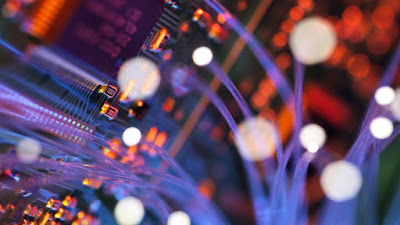With the amount of internet-connected devices increasing every day, the need for better, faster Internet is considerable. University researchers have come up with a very clever solution to this problem.
Electrical engineers at the University of California, San Diego have just broken the capacity limits of fiber optic cables nearly 20 times, successfully sending a signal through 7,456.45 miles of cable without needing electronic regenerators. This breakthrough could potentially increase the strength of the fiber optic cables that connect the world.
Current fiber optic tech only allows for a certain amount of strength before the signals through the cables distort
Current fiber optic tech only allows for a certain amount of strength before the signals through the cables distort, requiring the usage of expensive electronic regenerators to increase the signal clarity over a long distance. This distortion is called "crosstalk," and it adheres to a set of physical principles. In other words, this distortion isn't random, and thus, predictable.
The researchers at UC San Diego use what they're calling a "frequency comb" to predict those distortions and reverse them, creating a stronger signal without the need of regenerators. With the combs in place, the researchers were able to send a signal 20 times stronger than the previous limit without any signal degradation.
A Press Release from UC San Diego compared the usage of these frequency combs to an concertmaster tuning an orchestra before a concert: all of the instruments tune to a pitch given by the concertmaster, synchronizing the whole orchestra.
In fiber optic communications, information is sent across multiple channels, which operate at different frequencies. The frequency combs synchronize all of these channels, which is what allowed them to send clear data over 7,000 miles of cable.
This breakthrough comes shortly after there was some panic in the media about the internet reaching capacity because of the limitations in fiber optic capacity. Today's standard fiber optic cables won't be able to handle the ever increasing amount of internet-connected devices.
The rise of the Internet of Things on top of the huge amount of internet-connected devices in the world highlights the need for stronger internet. The researchers at UC San Diego have shown the world a promising solution to the problem of improving the existing fiber optic infrastructure.
Have something to add to this story? Share it in the comments.













توثيق حسابات انستقرام I am impressed. I don't think Ive met anyone who knows as much about this subject as you do. You are truly well informed and very intelligent. You wrote something that people could understand and made the subject intriguing for everyone. Really, great blog you have got here.
ReplyDeleteFirst You got a great blog .I will be interested in more similar topics. i see you got really very useful topics, i will be always checking your blog thanks. زيادة متابعين تيك توك
ReplyDeleteIt's really nice and meanful. it's really cool blog. Linking is very useful thing.you have really helped lots of people who visit blog and provide them usefull information. زيادة متابعين تيك توك
ReplyDelete